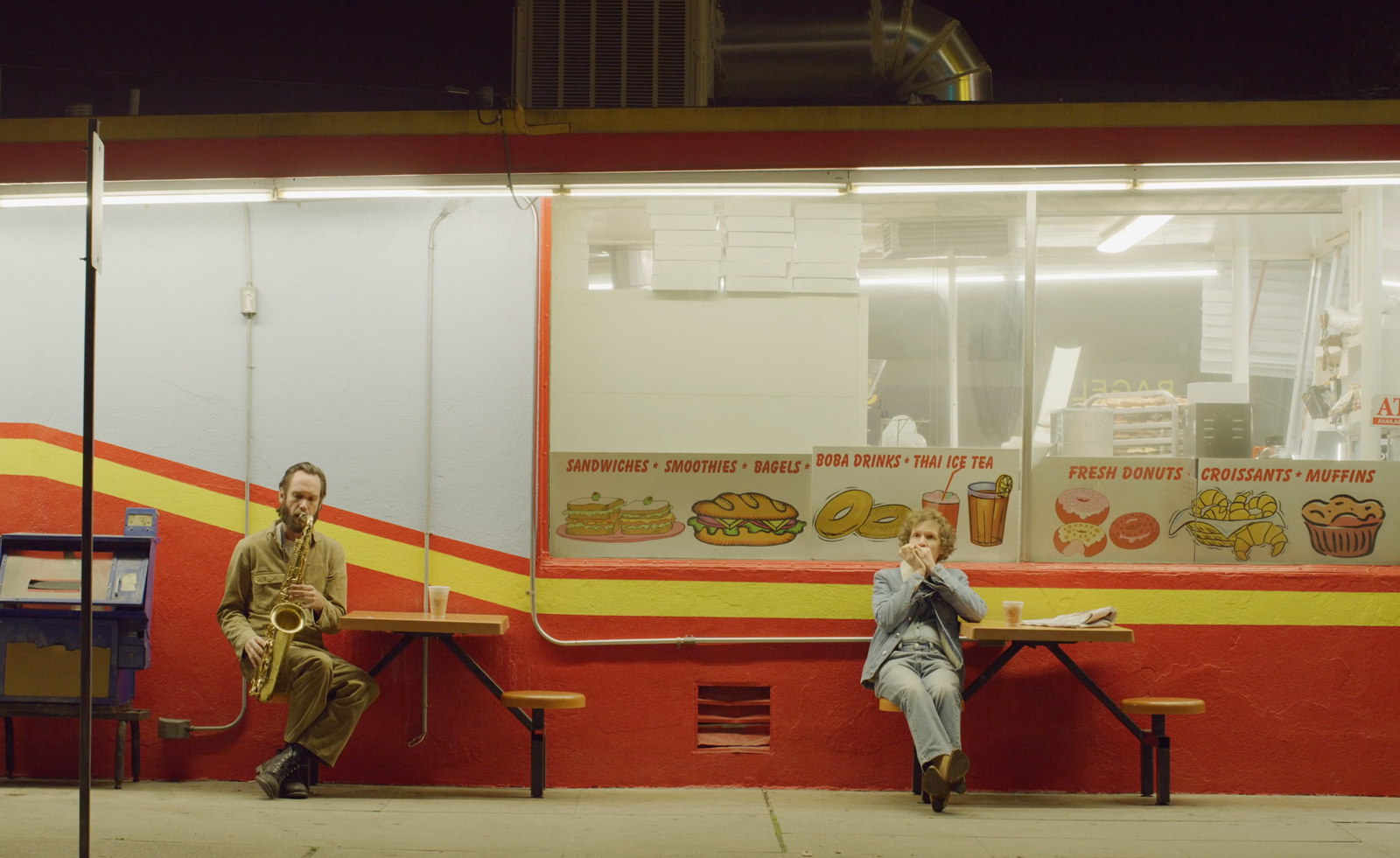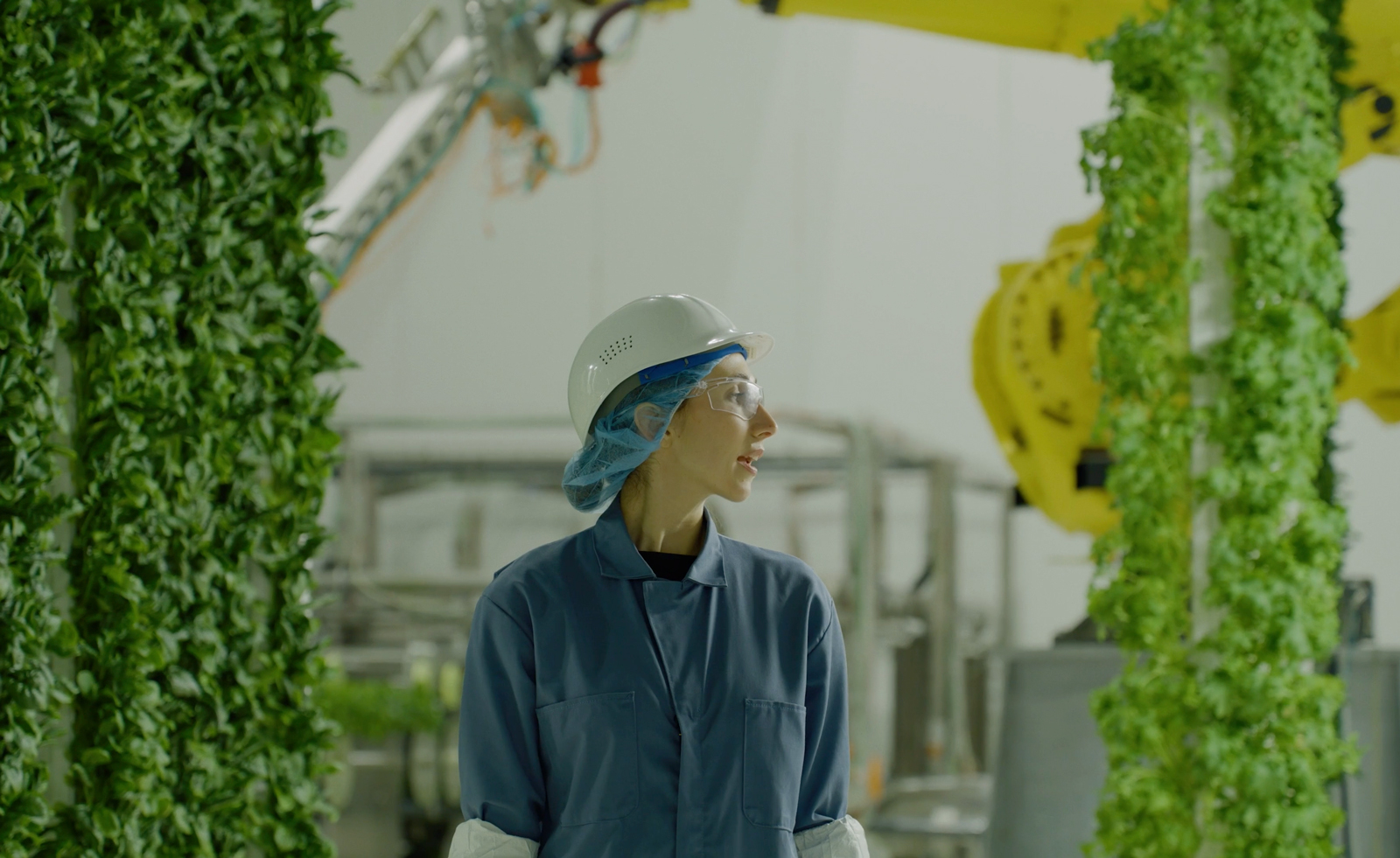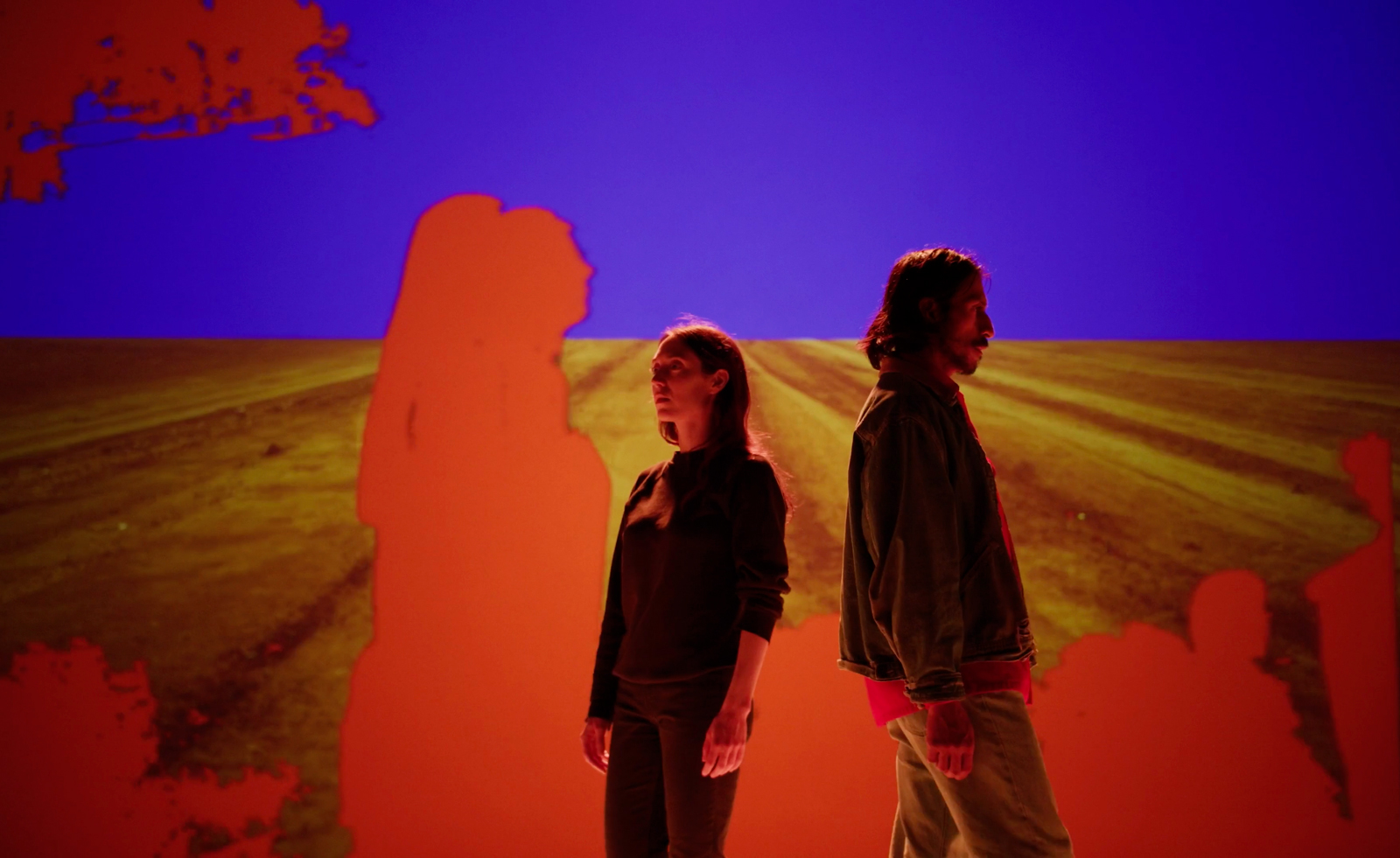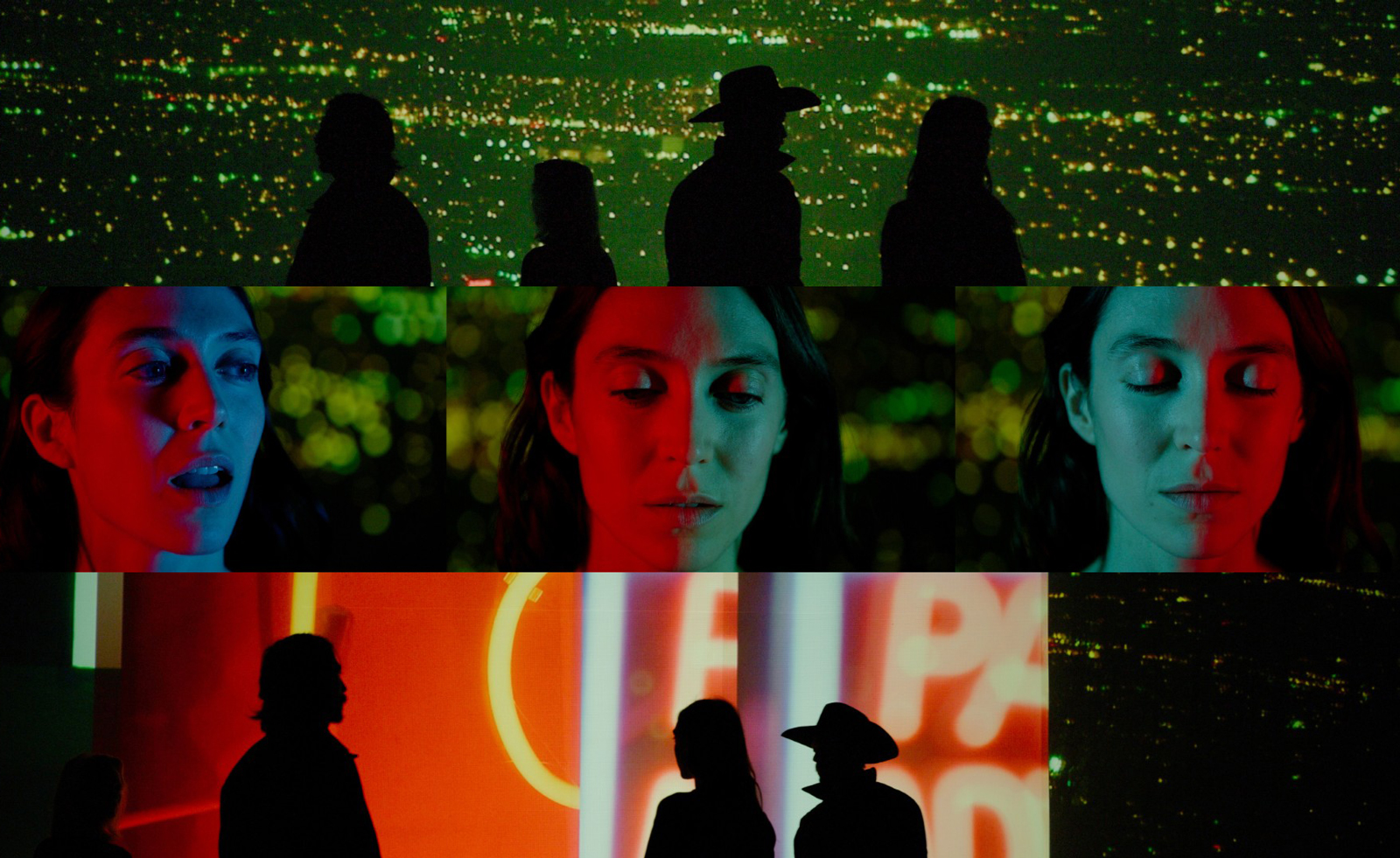'I don’t want to see culture always falling for formulas': inside Doug Aitken's ambitious cinematic installation in LA
Doug Aitken’s Lightscape is an ambitious installation at the Marciano Art Foundation in Los Angeles

“You can get lost in the blink of an eye,” intones a voice amidst the cinematic cacaphony of Doug Aitken’s Lightscape, an ambitious installation at the Marciano Art Foundation in Los Angeles. As much a sonic as a visual accomplishment, it is a one hour Gesamkunstwerk of Aitken’s preoccupations using characters and scenes familiar from his earlier excavations of Southern California, especially Los Angeles. It encompasses much that is ravishing, troubling and incomprehensible about the region even to residents such as myself.
Open frame doors, like shoji, lead to the immense darkened theater with pale wood seating in the center, a simplicity at odds with the pace of action on two opposing sets of massive screens. The non-linear scenes include Death Valley desert, pulsing ribbons of light along nighttime freeways, a seedy bar where Ed Ruscha’s face appears on the tv screen, a white modernist house by Richard Neutra where a lone mountain lion paces to the sounds of Philip Glass, and a cowboy riding his horse through a scrubby lot lined with deteriorating aircraft.
Commerical signage, the ubiquitous, tragic and tempting come-ons of L.A., become a visual and vocal mantra in the film. A disembodied voice commands, “Don’t Forget to Breathe.” Such signs echo Aitken’s familiar wall-mounted sculptures of words rendered in mirrors and other materials. Yet the film has no linear narrative. He explains, “I wanted something that would really kind of empower the viewer to walk in at any time and have their own dance with what it is."
Aitken, 59, created this work in collaboration with the L.A. Philharmonic and Master Chorale led by conductor Grant Gershon. During the enforced hiatus of the pandemic, Aitken’s concept evolved in duration and scale and last November the film was shown with live music for a single night at Disney Hall. There were excerpts from minimalist composers like Glass with choral melodies by Aitken. Live as well as recorded music is integral to the installation at MAF with various performers, including Beck, scheduled for weekly appearances throughout the exhibition.
“I don’t want to see culture always falling for formulas,” Aitken explains of his new piece. “Sometimes you need to work with more intuition, take that energy of improvisation and see if you can make something new with it.”
Aitken compares it to the surrealist game of exquisite corpse where each artist contributed part of a drawing without seeing the others to create an original yet collective composition. In this case, an atm beep, a hand patting a table top and a human voice coalesce as a “sonic landscape, a strange shrill symphony.”


“We live in a world of fragments with all these experiences in real time, a wild field of chaos and white noise, beauty and violence,” he says. “They all cohabitate. With a work like this, I want to embrace that range and say maybe there is a structure that’s a bit closer to how we actually experience rather than the traditional narrative we’ve been presented with our entire lives.”
Wallpaper* Newsletter
Receive our daily digest of inspiration, escapism and design stories from around the world direct to your inbox.
Redondo Beach-born Aitken, a graduate of Art Center College of Design, was a recipient of its 2019 lifetime achievement award, one of many such distinctions including the International Prize at the 1999 Venice Biennale. He has had numerous museum surveys and evolved increasingly monumental projects such as 2012’s Song 1 wrapping the circular exterior of the Hirschhorn Museum in Washington, D.C. with video projections, or 2017’s Mirage, a house constructed of mirrored panels to reflect the surrounding desert landscape in Palm Springs.

With the emphasis on unscripted live characters and situtations, this piece is similar to his 2013 Station to Station, the “nomadic happening,” of changing performances that took place on a train traveling from New York to San Francisco and later released as a film.
This project was born of the isolating conditions affecting everyone during the pandemic. One scene is set in an Amazon distribution center where blue outfitted workers push cheery yellow machinery in angular rhythms and gestures, a kind of industrial choreography. In another scene, artist and designer Nicholas Haas, acting as disaffected loner, wanders among the oil derricks near San Pedro. True connection seems impossible. Aitken explains, “The idea of this superstructure that we live with —delivery to your door in 24 hours, the pulse of your phone that you can’t stop scrubbing —it all seems so weightless, effortless to us. But underneath it all is a kind of architecture of materials, natural resources, fabrication, transport. In Lightscape, I was looking at those stories of survival. We are dealing with survival in different frequencies.”
This show provides a phoenix-like revival of MAF, a popular center for the contemporary art collection of blue jeans designers and entrepreneurs Paul and Maurice Marciano. Their Marciano Art Foundation, long run by Olivia Marciano, recently appointed Hanneke Skerath as director. With curator Doug Fogle — who is also her husband — she reinstalled part of their 1500 piece collection on the upper levels of the extravagant Scottish Rite Masonic Temple designed in 1961 by Millard Sheets.
At the entrance to his show, a sculpture of three translucent figures, modeled on characters in the film, stand with their heads bowed and illuminated by interior radiation. “I wanted these vessels to be filled with light and moments of connectivity when they are pulsing rhythmically together,” he explains, as though trying to extract meaning from the randomness of the region’s extreme horizontality.
After years of working on this film, Aitken felt driven to create such tangible sculptures including one in the shape of L.A.’s legendary mountain lion P-22. He built it on a larger than life scale using urban waste like microplastics and chunks of rubber. “For years I was working in these dematerial mediums, which are music, sound and moving image. Then I like escaped. I got my hands covered with splinters and dirt while making these physical, formal sculptures.” It is one of several included in his next exhibition titled, tellingly, Psychic Debris Field, open at his long time gallery Regen Projects.
Lightscape, at Marciano Art Foundation is now open, and continues until March 15
-
 Extreme Cashmere reimagines retail with its new Amsterdam store: ‘You want to take your shoes off and stay’
Extreme Cashmere reimagines retail with its new Amsterdam store: ‘You want to take your shoes off and stay’Wallpaper* takes a tour of Extreme Cashmere’s new Amsterdam store, a space which reflects the label’s famed hospitality and unconventional approach to knitwear
By Jack Moss
-
 Titanium watches are strong, light and enduring: here are some of the best
Titanium watches are strong, light and enduring: here are some of the bestBrands including Bremont, Christopher Ward and Grand Seiko are exploring the possibilities of titanium watches
By Chris Hall
-
 Warp Records announces its first event in over a decade at the Barbican
Warp Records announces its first event in over a decade at the Barbican‘A Warp Happening,' landing 14 June, is guaranteed to be an epic day out
By Tianna Williams